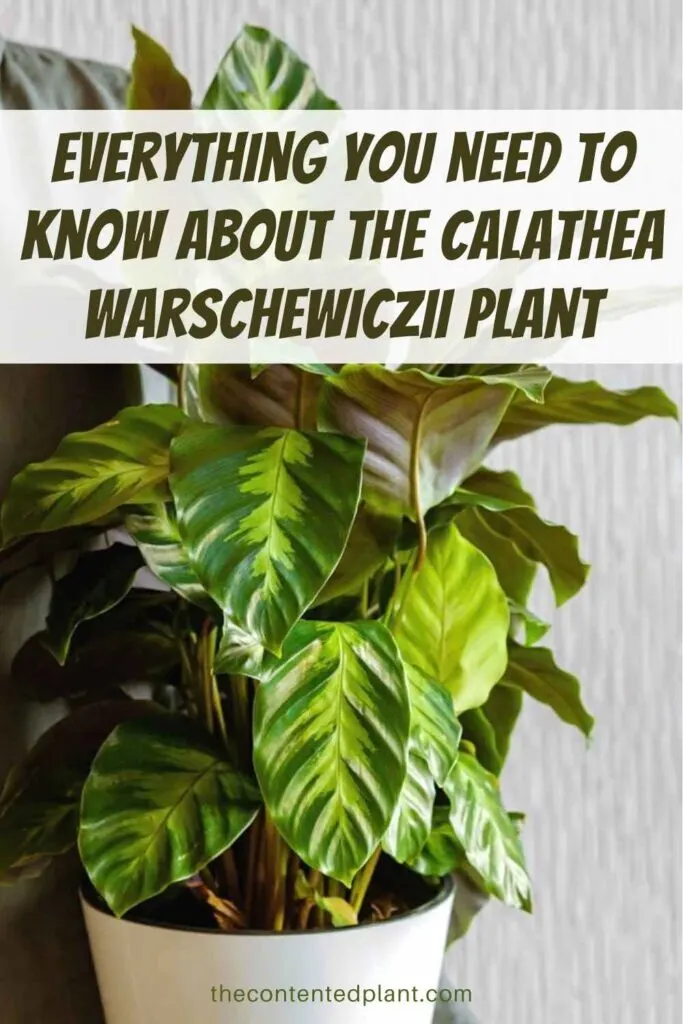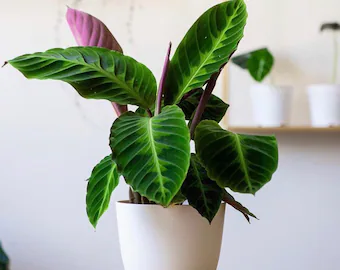Calathea Warscewiczii (Goeppertia warszewiczii), is a beautiful plant with long tapered ruffled leaves. These large leaves have outstanding dramatic contrasting colors.
The ribbing of the leaf has a jagged streak of yellow running through darker green. The Underside of the leaf has the stunning purple typical of many Calathea prayer plants.
Warscewiczii can reach over three feet in height and width at maturity.
This tropical plant is Commonly known among Calathea lovers as The Jungle Velvet. It is native to the lowland tropical jungles of central and South America.
It requires high humidity and needs correct conditions to do well as a houseplant.
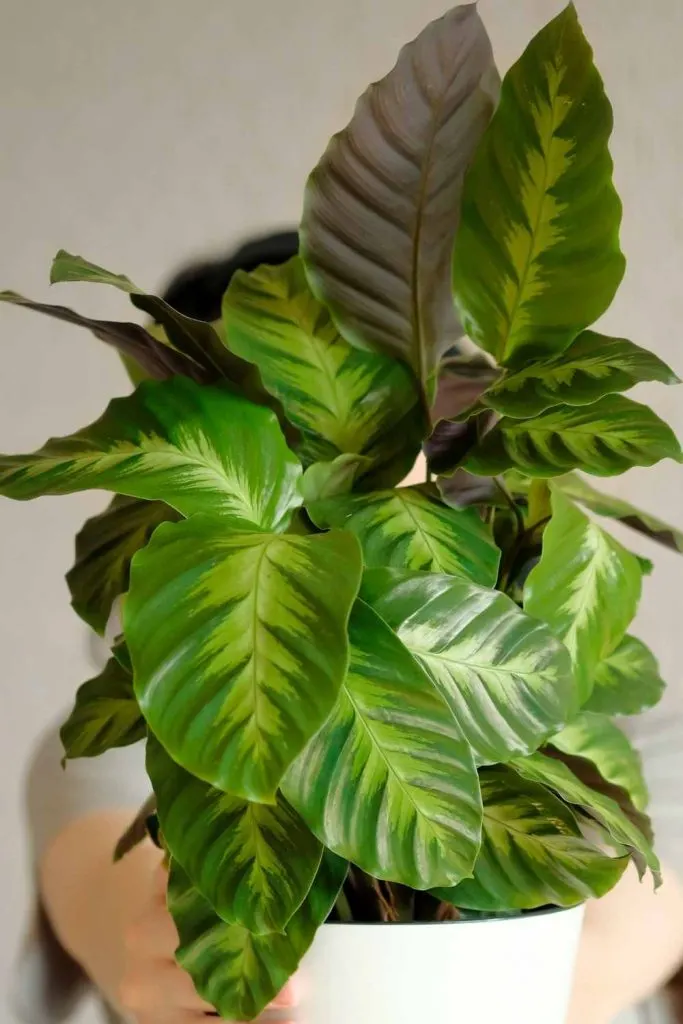
If you’re a Calathea fan, you know they are Plant Divas. These tropical beauties require vigorous attention. They must have correct conditions to thrive.
The Calathea Warscewiczii is a bit finicky even for a Calathea. Take this seriously. For success with the Jungle Velvet you must cater to its needs.
It’s a gorgeous plant and well worth the trouble.
But not everyone is into plants for the incredibly interesting hobby they create. If you are looking for a ‘set it and forget it’ plant try one of these…
Nurturing plants is satisfying for many. Calatheas will offer you that opportunity.
Great Things About Calathea Warscewiczii:
- Like all Calatheas, the Jungle Velvet flowers. But only small white flowers, in season.
You won’t see blooms on your Calathea often. The conditions have to be very good. Warscewiczii has to be in season and thriving to produce flowers indoors.
Calatheas are grown for the stunning foliage. Cute little flowers are a perk you shouldn’t count on. But they may happen. 🙂
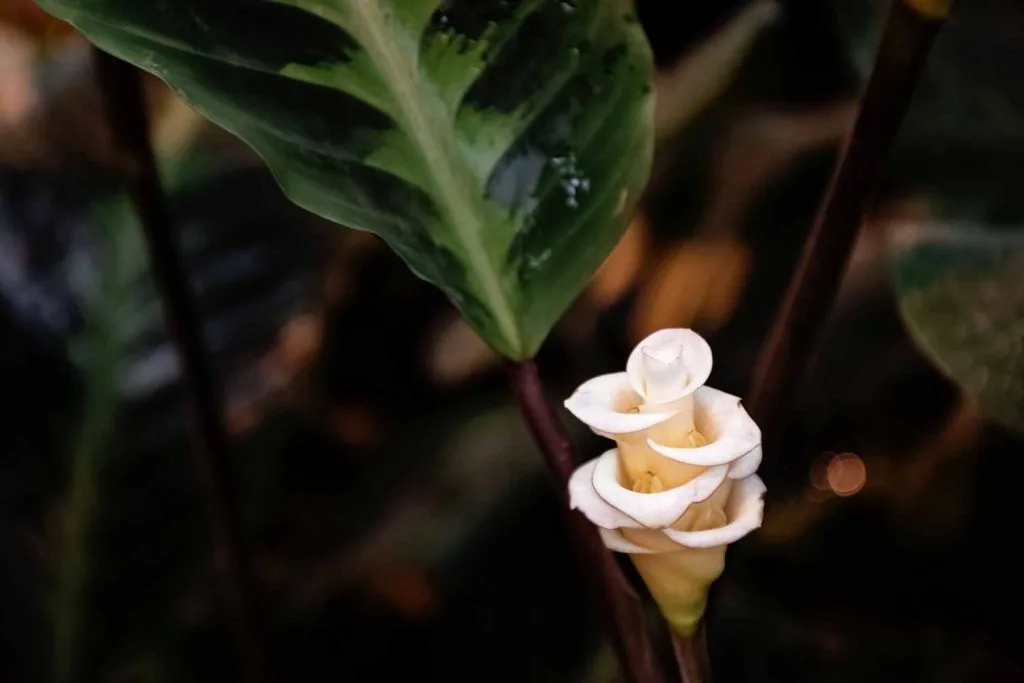
- Even Though the Warscewiczii is a demanding plant. It is also resilient. It will show you distress signs. Once you fix the problem the plant will often completely bounce back.
- All Calatheas are Non toxic. Set these bushy plants on the floor. Don’t worry about pets and children taking a bite out of the leaves.
Remember: All pets and human are safe with Calathea plants. However, you don’t want pets and kids in the potting soil. Who knows what pathogens are in there.
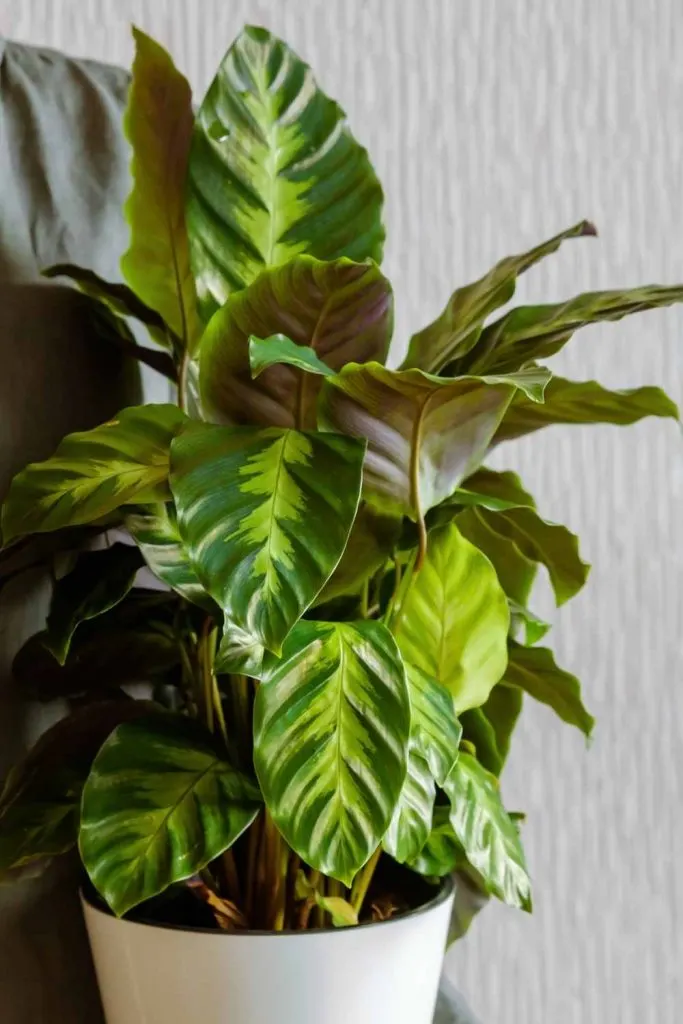
- Calatheas are also air filtering plants. The leaves filter the air as they respire. Calatheas help bring freshness to your home and reduce some of the household toxins in the air.
- These interesting plants have leaves that move. If you think the leaves are changing throughout the day and moving themselves around. They probably are.
At night, after the lights are out, the leaves fold straight up, as in prayer. And at daylight they will open. Be sure you give them room to open and close.
Calathea Warscewiczii Care:
Read our complete and detailed care guide to learn how to care for this plant. If you have questions for us we are happy to plant chat with you.
Calathea Warscewiczii Care guide
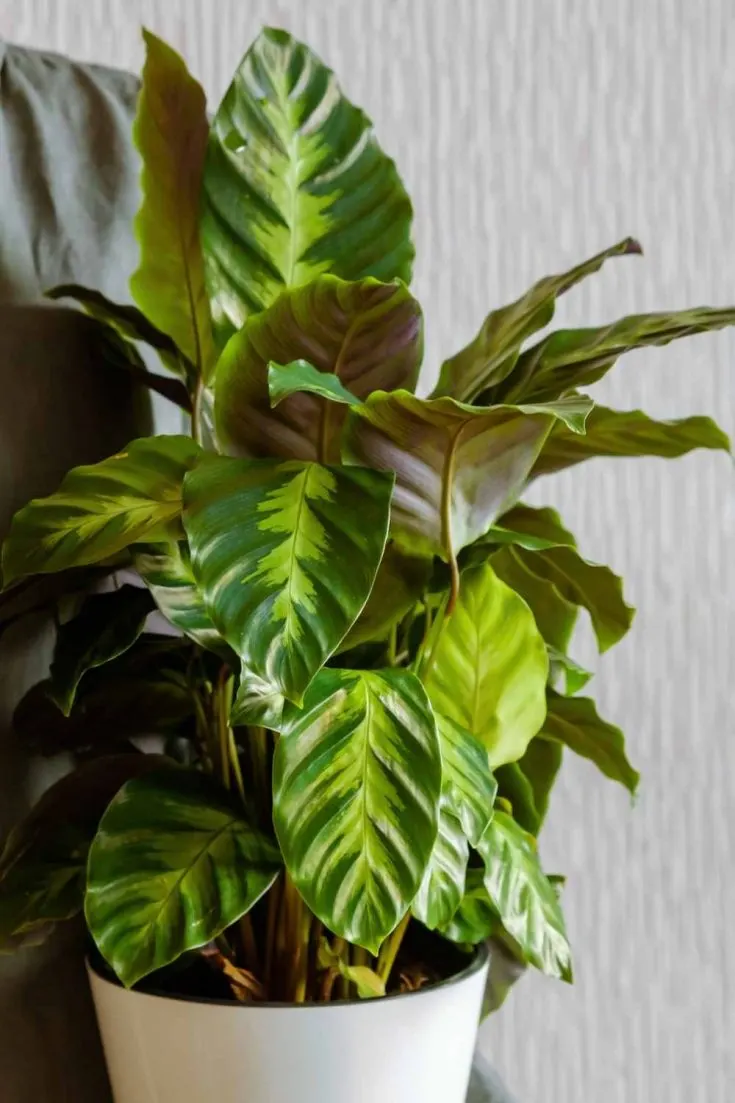
Calathea-Warscewiczii Plant is a beautiful plant with an outstanding and eye catching pattern in it's leaves. Their care needs are specific and important. They are sensitive. This is Not a forgiving plant.
Once you find the perfect growing conditions for your Calathea Warscewiczii it will perform well for you.
Learn what they need and give it to them. Their lovely foliage is so worth the effort!
All Calathea plant care is similar. No matter what type you own this care guide will apply.
Materials
Tools
Instructions
Soil Preference:
- Calatheas enjoy a light well draining soil.
- A mix of potting soil and perlite and peat (or Coir ) will keep the roots happy if well mixed with lighter soils.
- Our mix for this plant is 30 % potting mix, 30% succulent soil or coir and 30% perlite or pumas.
- A heavy soil potting mix is not recommended for these plants.
Pot Size and Type
- Calatheas grow from rhizomes. And they grow new offshoots to the sides of the mother plant.
- This means they will fill a pot out as a wider plant eventually. Quite a nice table top centerpiece.
- Calathea Musaica will grow to the size of the pot with one or more rhizomes. If you leave it to grow as a grouping of rhizomes in one pot you will need to find a pot that has a wider circumference. They do not like to be overly root bound.
- If you want to encourage faster growth choose a pot about 2 inches wider in diameter than the current pot.
- Use a well drained ceramic or plastic pot. It MUST have excellent drainage.
- Terra cotta pots are not recommended. They will wick too much water away from the soil.
- Repot every second year or when roots come out the drainage holes on the pot bottom To the next pot size up.
- Don't jump to a huge pot from a small one unless you wish to encourage faster growth. Just go to the next size up pot. A Too large pot with too much constantly moist soil will encourage root rot.
- For Calatheas a self watering pot system works well. (linked above). They control the watering for you and help avoid root rot, overwatering and under watering.
Lighting: 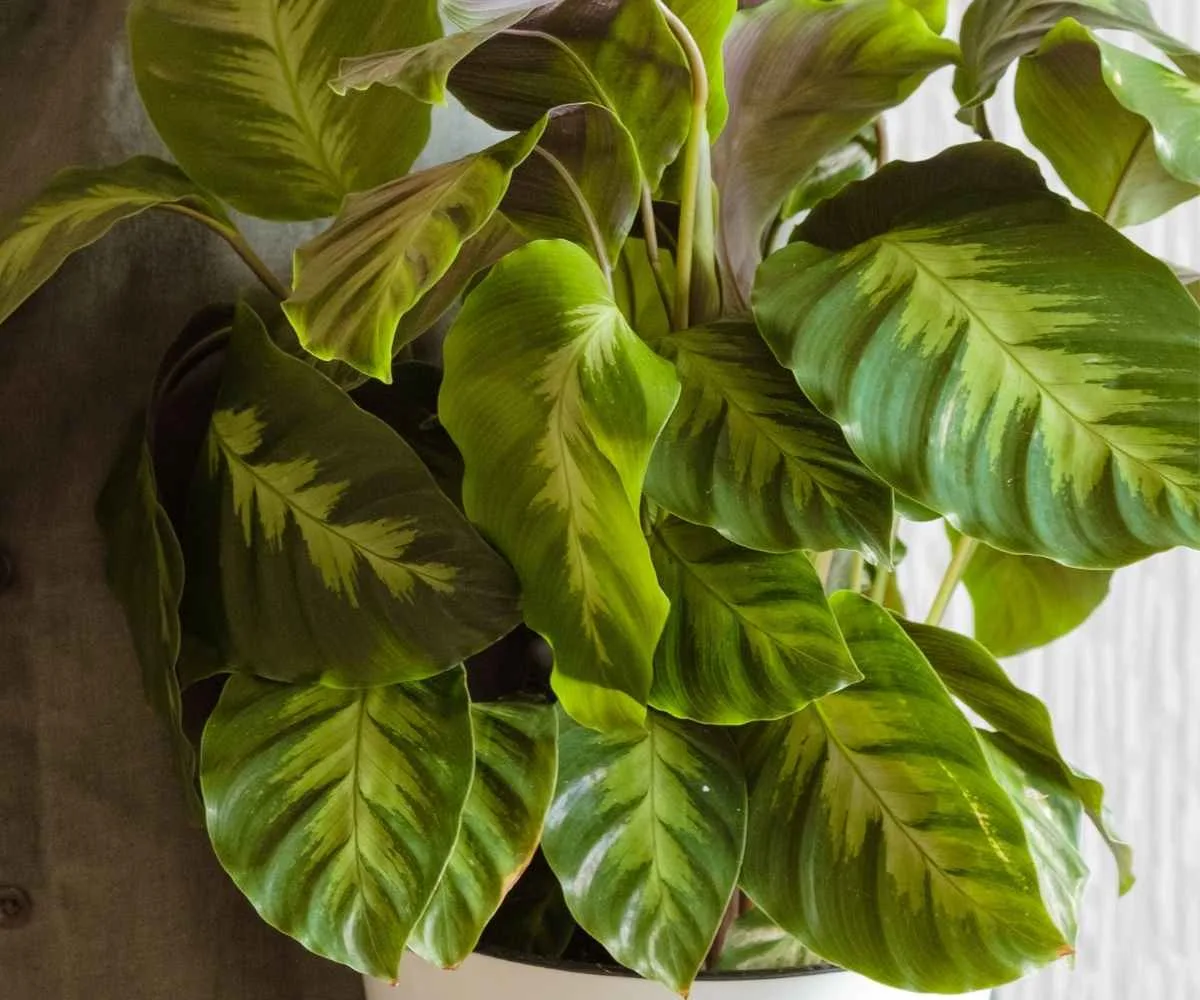
Calatheas enjoys indirect light for best leaf variegation and optimal growth.
- If the leaves fade move the plant to a less bright area and see if that helps.
- Too much light can also fade the leaves and crisp the leaf edge.
- It will tolerate lower indirect light but the plant may grow more slowly. Leaf variegations may not be well expressed.
- Shield the plant from strong direct light in summer south and west sunny windows. The leaves will burn and the colors will fade. Look for dry brown spots on the leaves and curling brown edges. If you see them move the plant to lower light.
- Tip: Window sheers or blinds can offset some brief periods of high direct light.
Watering:
- Your Calathea is VERY sensitive to the water you use. These plants love low mineral, soft acid water between 5.5 and 6 Ph. Hard water high in minerals and salts will burn the leaves.
- Collect rain water or use Filtered or distilled water to prevent problems with minerals and PH.
- Water your Calathea when the soil is dry down an inch or so. Calatheas enjoy even moisture in the soil. But never let it sit in soaking wet potting mix.
- Be sure to use your moisture meter every couple of days and especially before watering. The dial should read moist when pushed down to the bottom of the root system. If the meter reads dry you need to water. But if it reads wet WAIT. This is important. Calatheas are sensitive and easily get yellowing leaves and root rot. Do not overwater!
- Calatheas enjoy evenly moist soil. However, don't water your plant until your moisture meter tells you the plant is verging on dry in several places in the soil.
Watering Problems:
- If your calathea leaves start to roll up and curl, the plant droops or the edges turn brown suspect watering problems.
- Under watering can show all the symptoms listed above and most often causes leaf edges rolling up, brown tips and crisping. Adjust your watering or soil mix to accommodate.
- Over watering will end in root rot, grey mold on the leaves, algae growth on the soil and fungus gnats or other pests moving in. Yellowing leaves can also mean the plant roots are too saturated and are starting to die.
- For best practices Try a watering schedule of once a week. But do not water if the soil is wet. Alternately, Do not let the soil dry out completely.
- Watering is best done on a regular schedule with a moisture meter check so the plant is not over or under watered. Both can cause stress.
- These tropical plants enjoy humidity of 50 to 70%. Use a hygrometer next to your calathea to make sure you have enough humidity for them.
- Never let this plant get wet feet. If the soil is compacted the bottom of the soil can remain wet which encourages, grey mold on the leaves, root rot and Fungus Gnats. If you see yellow leaves or leaf tips you are probably overwatering or Inconsistently watering.
- In dormant winter months reduce watering to when the soil is dry down 2 inches .
Humidity Tips:
- Calatheas are happy at 50 to 60% humidity. Although they can tolerate higher, do not let it drop under 40%.
- IF your calathea has brown crispy tips or edges the humidity is probably too low for it.
- I use an inexpensive hygrometer to monitor the room temperature and humidity levels near mine. It is cheap and so helpful!
- In dry climates this plant will thrive with a humidifier nearby. Or set it in your kitchen or bathroom.
- Frequent misting on a regular daily schedule will help keep humidity up when all else fails. However, misted leaves can be hosting spots for bacteria and fungi.
- Set the Calathea plant on a pebble tray with water not touching the pot bottom for added humidity as necessary.
- Grouping plants together will also provide more humid conditions as they respire and evaporate.
- If your calathea leaves show viral or bacterial spots on them your humidity may actually be too high. Try reducing it and keep an eye on the watering. This can also be a sign of unhealthy roots.
How to Fertilize:
- Calatheas require a regular fertilizing schedule. BUT, they are susceptible to fertilizer burn.
- Apply a good quality fertilizer (linked in materials) monthly through Spring and summer at half dose. If you see burn marks on the plant leaves reduce fertilizer by half again.
- Decrease feedings by late Fall and allow your Network plant to rest through the winter months.
- Look for brown spots on the leaves of your plants. This may indicate an over concentration of salts in the roots from over feeding. It can burn the leaves.
- The remedy is to set the plant under a faucet of water and let the water run through for 10 minutes or so. Allow the pot to Completely drain. Discontinue fertilizer until the plant recovers.
Temperature:
- Optimal temperatures for Calathea plants are 65 degrees F. to 75 degrees F.
- Calatheas are sensitive to cold drafts from windows and doors.
- In winter, beware heat vents blowing on your plant leaves. Calatheas cannot tolerate uneven heating, or drying heat vents or drafts.
Pruning and Training:
- Sharp sterile Hand pruners or sharp scissors are preferred for pruning. They will give a clean cut that will heal quickly.
- Pruning is usually done to shape the plant or cut off unsightly leaves.
- Calatheas grow wider rather than taller with time. The Network plant grows to about 15 inches high. This makes them good choices for desk and table top plants. Or set them in a deep, indirectly lit window sill.
Leaf Care: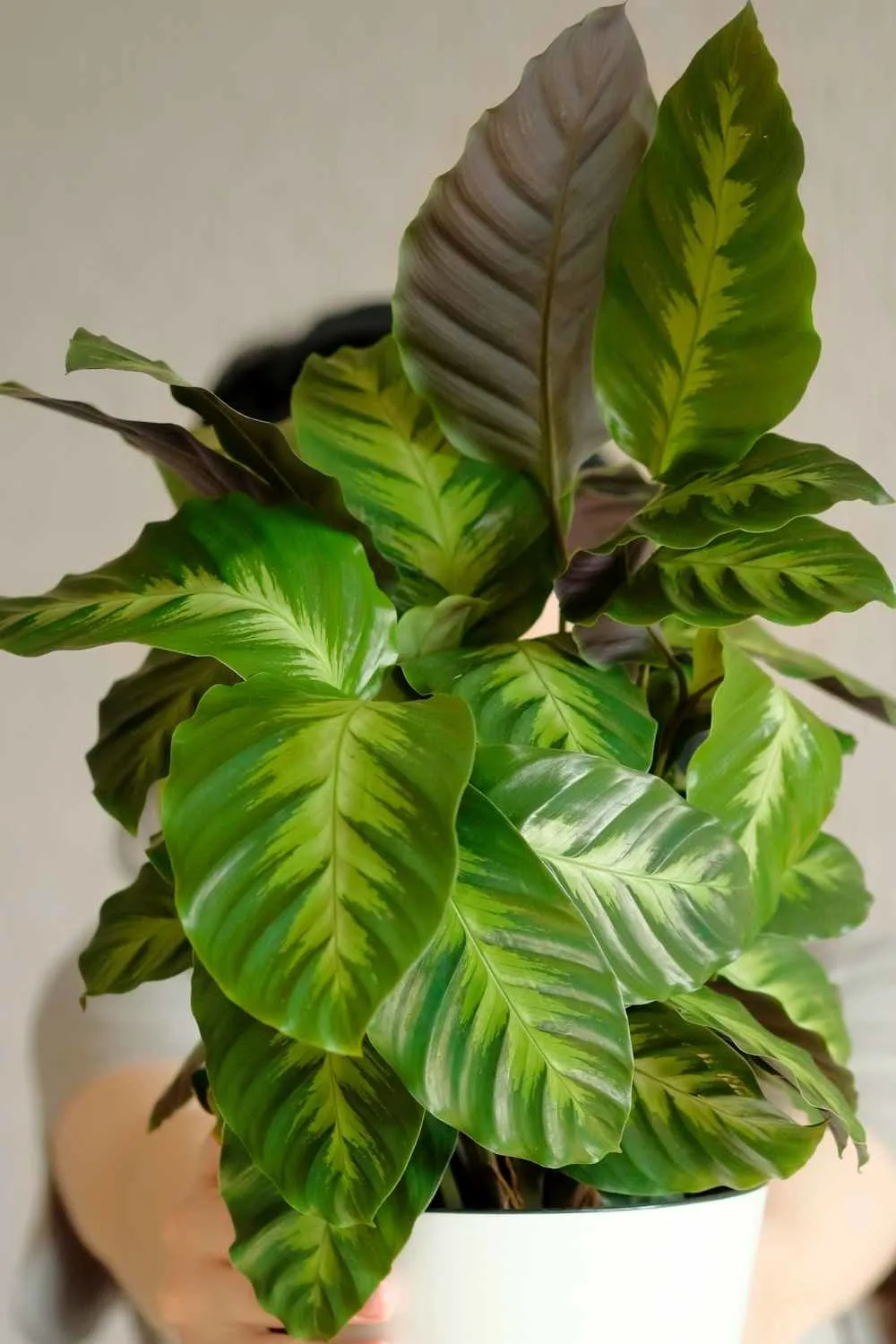
- For the best care your Calathea leaves enjoy occasional washing.
- This helps keep the stomata (leaf pores) open for plant respiration.
- Healthy leaves with a good clean surface are most able to resist pests. Neem oil leaf shine and water is a good choice for leaf washing.
- Dusty leaves will starve the plants of water exchange through humidity.
- washing your plant leaves is also a great way to keep pests off the leaves. And early pest intervention since you are closely examining your plant.
- Hand Wash the leaves monthly with water and neem oil.
- You can also use a shower to clean off a calathea. Beware the water temperature. Keep it room temperature to avoid shocking the plant.
- If you notice an occasional yellow leaf that droops and fall off the plant this is normal but keep an eye on it. Check for pests, watering issues and how your feeding your plant.
- Read our post on 7 reason why your plant has yellow leaves for more trouble shooting tips.
Pests:
- All plants get attacked by pests. Calatheas are especially susceptible to spider mites.
- Stress by longterm poor watering practices, poor light, extreme temperatures and soil conditions are contributors to pests. Fungus gnats will set up house in the soggy soil of an overwatered plant.
- Washing the plant leaves occasionally with neem oil leaf shine will help keep pests from establishing themselves on the plant.
- Spider mites are the biggest problem for Calathea plants. Watch for the webs. Treat immediately and continue for two weeks or more to remove the next generation of spider mites after the adults die. Eggs attach to the leaves and cannot be washed off easily.
- Mealy bugs, scale, thrips and whitefly are also common houseplant pests you will see in a stressed Calathea.
- Read our post on How to get rid of aphids and other pests with our homemade pesticide soap recipe or neems oil.
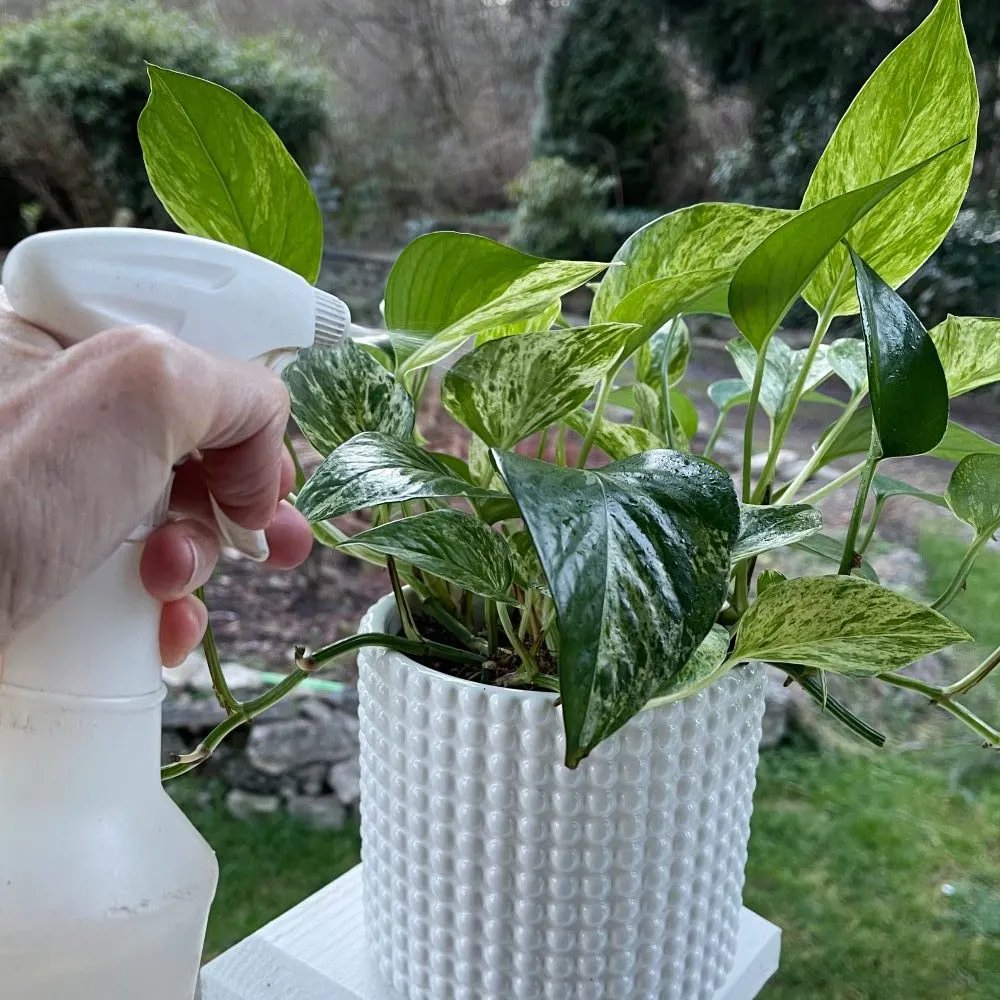
- To minimize the possibility of pests be sure to check all nursery plants before bringing them home. Carefully examine the top and bottom of the leaves.
- Do NOT purchase plants with signs of pest damage or disease.
- Quarantine all new plants until you are sure no pests live in them.
How to Propagate Calatheas:
- Propagation is best done through root division.
- Seed propagation can be done but the seeds can be difficult to source.
- Dividing a calathea is easiest when repotting it in spring or summer.
- Unpot the plant gently. Look at the root system. If the plant is mature you should see a natural parting in the leaves and roots. This is the two plants growing together.
- Each plant section will have its own rhizome. This is going to look like the stem growing straight down with roots coming off them.
- Gently pull apart the two rhizomes to separate them. If the roots are heavily intertwined cut them as necessary with sharp sterile scissors or small pruners.
Pot the two plant sections in separate pots. In 2 to 4 weeks the divisions should be settled and growing.
Non Toxic Plant:
- All calatheas are non toxic to humans and pets. Still it is not recommended to chew any houseplant.
- Biting or swatting are not good for the health of the plant.
- Also you don't know what chemicals, pests or pathogens are in the soil or fertilizers you use. So best practice is to keep houseplants away from pets and kids.
Notes
The video below is relevant to the care of all calatheas:
More Incredible Calatheas:
Prayer Plants are so incredibly diverse. Browse through all our posts on Calatheas. Find more of these beautiful tropicals.
Roseopticas, Ornatas, the Orbifolia and lancifolia are examples of the fascinating Marantaceae family group.
Here are a few more of our favorite Calatheas.
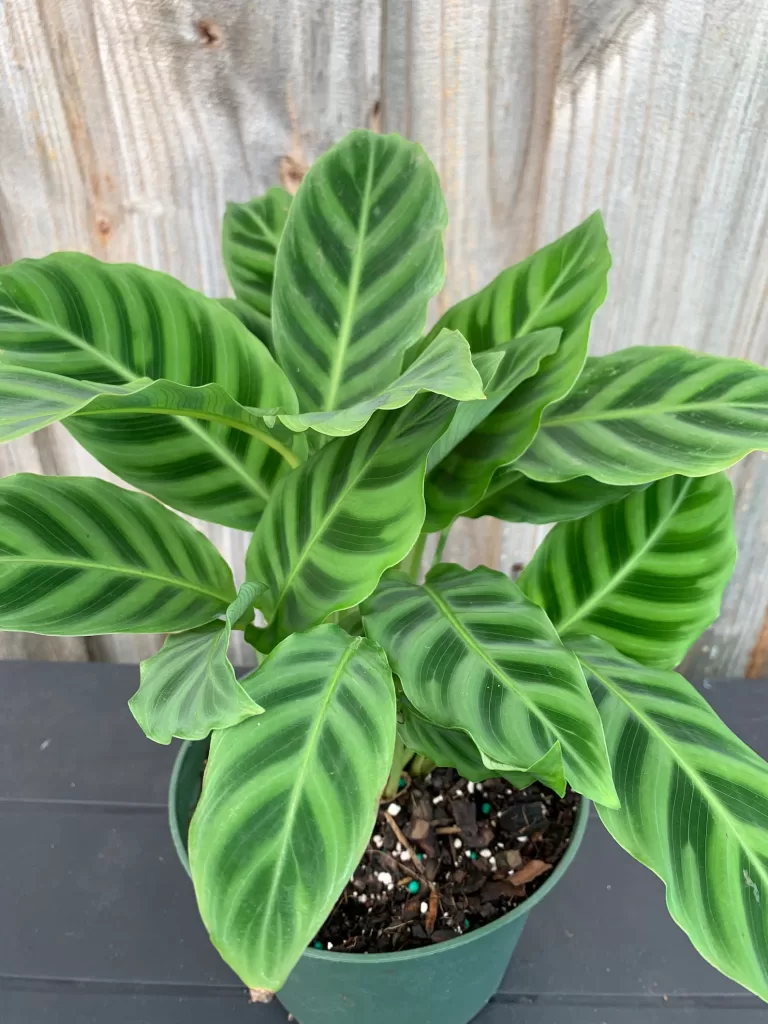
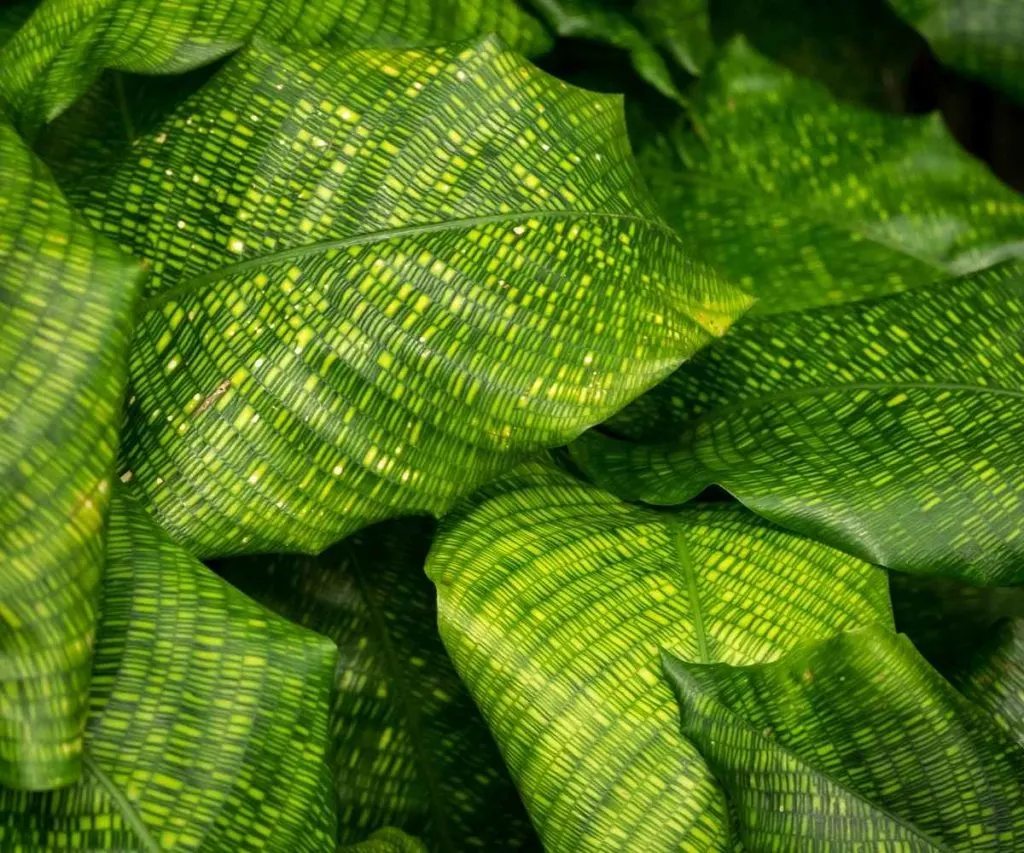
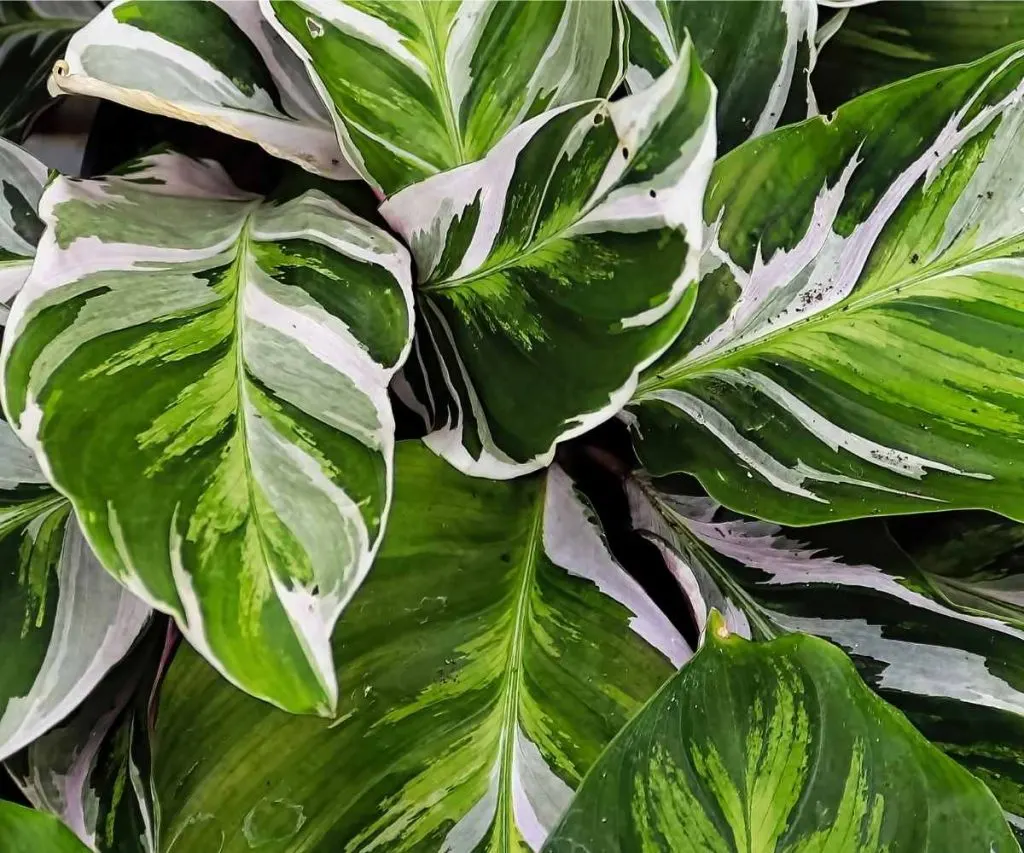
Do you grow Calatheas? I do. I love these picky princesses. Share you plant stories with us in the comments section below!
Follow Us:
Find us on YouTube, Instagram , Pinterest and TikTok! We love to Plant chat. We also comment, like and occasionally share your content to our daily stories. We’d love to see your plants. Share your joy in your houseplants. Happy Planting!
Recent Posts:
